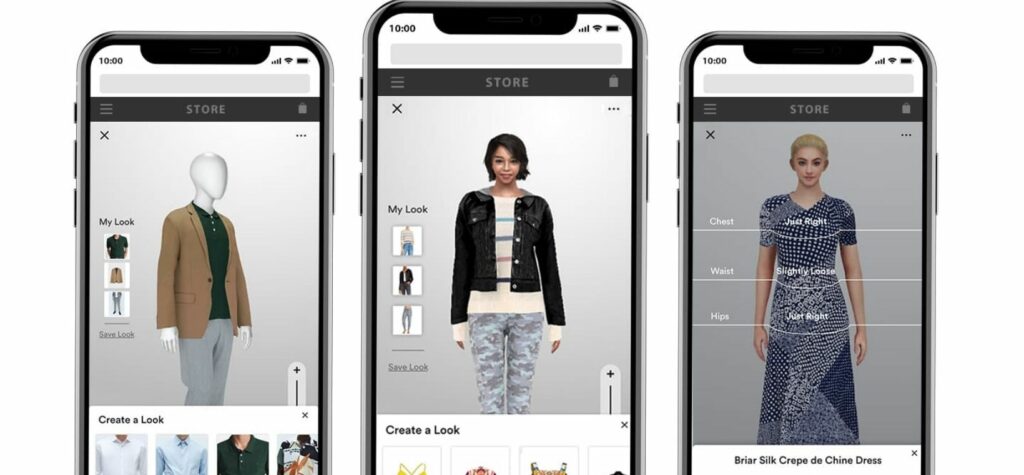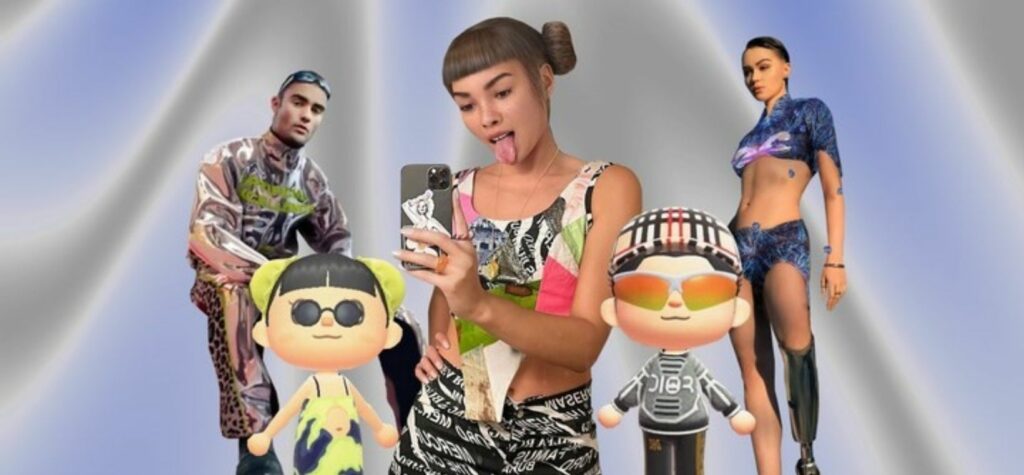We use cookies to improve your experience. By continuing to use this website you agree to our cookie policy.
Virtual reality fashion design has been taking the fashion world by storm.
Fashion shows have started presenting in virtual form, and there’s been a steep increase in virtual shopping, using features such as developments like AR Try-On, virtual dressing rooms and virtual boutiques. Fashion is an advanced and modern industry, going from strength to strength utilizing new technologies, affecting retail and design.

What is Virtual Reality Fashion Design?
Virtual reality fashion design has been making a significant splash on social media platforms such as Instagram and Snapchat. Applications like AR tr-on enable users to wear digital clothes to virtually try clothes on and share their looks with their followers. It’s an easy and accessible way of engaging with a brand and raising awareness for their products, drumming up business for businesses while also being a fun, interactive experience.
Digital fashion is a rising trend in the world of fashion. For example, startup The Fabricant, Dapper Labs and Johanna Jaskowska collaborated to create ‘Iridescence’s digital dress and NFT product. It only exists in the virtual world but is a significant first step to building a whole new fashion era.
Virtual fashion design can therefore work in two ways. It can be used to create virtual clothes with no physical counterpart or can be used to make designs for physical clothes, giving artists and designers more scope to understand their creation in the developmental stages and test out their client’s reaction to it before actually producing those garments.

It is a bit of a learning curve, though. In Illinois, a university class used Google Tilt Brush, a 3D VR application, to design dresses, allowing the students to experiment with a new form of creation that they wouldn’t be used to. It involved a lot of trial and error as the students were more used to traditional tools, but the sessions gave the students more freedom and scope for their creations, helping the process be flexible and spontaneous as they figure out what works and what doesn’t.
Creators can also use AR in fashion design by letting designers scan body types to get exact measurements. This helps them create more customised clothes, allowing for experimenting with different fabrics, colours and shapes with virtual fittings keeping their customer at the centre of the process. This personalises the designers’ experience to tailor clothes and work closely with customers despite being in different locations, without wasting raw materials on sampling and shipping them around.
To read more about AR clothing, tap here.
Benefits of VR Fashion Design
The fashion world has always been at low sustainability. Still, VR is set to change all that by using virtual fashion design to circumvent some of the ethical issues associated with the industry.
VR fashion design reduces the waste made from creating clothes drastically. With physical garments, any damaged products produced gets discarded, whereas, in VR, they can be erased at the click of a button, leaving no trace behind and significantly reducing pollution.
A lot of resources are being saved when designing and producing clothes digitally. It reduces the carbon dioxide emissions from waste and shipping. Additionally, reduces water usage, making it better for the world’s natural resources and encouraging customers to be more aware of climate issues in a world where younger generations are increasingly concerned about brand’s production practices.
It can also help correct ethical issues of overworking employees and work conditions. Also, it creates a healthier and safer work environment that lessens the negative social impact of fashion design, making a more beneficial process from sketch to store and helping alleviate the fashion world’s stigma of 3rd-world country work conditions.

Digital fashion also reduces the need for shipping clothes, which is just as harmful to the environment as fashion manufacturing. Clothes now can be uploaded to people’s phones for their latest Instagram or Snapchat shot, all at just the tap of a button. For those who only buy certain outfits to wear them for a social media picture, digital fashion creates a more sustainable way for customers to continue this trend without shipping or returns, thus going a long way towards protecting the environment and reducing costs for brands.
Virtual fashion design isn’t without its sustainability flaws, as it also leaves a carbon footprint. Still, it is taking significant steps towards sustainability right now.
This new era of fashion design inspires creativity and engagement, giving customers and designers alike more freedom for experimentation and giving designers more scope to try out as many designs and patterns as they like without the cost of wasting away materials. It also allows them to assess their work in a more accurate, measurable method.
Applying VR fashion design technology will help the fashion industry become more progressive in responding to social and environmental issues caused by production, creating a better work environment, building a better relationship with customers and saving resources, responding to a global need and saving increasing shoppers time.
